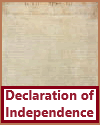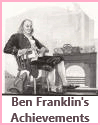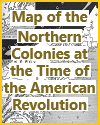Maps and pictures can significantly enhance students' understanding of the American Revolution by providing visual context, illustrating key events and locations, and making historical information more engaging. Here is how maps and pictures can aid students in their study of the American Revolution.
Maps:
- Geographical Context: Maps help students visualize the geography of the American Revolution, including the locations of major battles, colonial cities, and key regions. This context is essential for understanding military strategies and the movement of troops.
- Battle Locations: Specific battle maps show the terrain, troop positions, and movements during significant engagements like the Battle of Bunker Hill, Saratoga, and Yorktown. These maps provide insights into the strategies and tactics employed by both sides.
- Campaigns and Routes: Maps can illustrate the routes taken by armies during campaigns, such as General Washington's crossing of the Delaware River or General Burgoyne's march from Canada to Saratoga. Students can trace the paths of historical events.
- Colonial Boundaries: Maps depict colonial boundaries, which were often a source of tension and conflict during the American Revolution. Students can see how territory was divided among the colonies and understand the challenges this posed.
- Alliances and Foreign Involvement: Maps can show the involvement of foreign nations, such as France and Spain, in the American Revolution. Students can see how alliances affected the course of the war.
Pictures and Illustrations:
- Portraits of Key Figures: Portraits of important figures like George Washington, Thomas Jefferson, John Adams, and King George III help students connect faces to the historical names they encounter in their studies.
- Uniforms and Clothing: Illustrations of colonial and British uniforms, as well as civilian clothing of the period, provide insights into the attire of the time and help students distinguish between different groups.
- Weaponry and Technology: Pictures of muskets, cannons, swords, and other weaponry used during the American Revolution can enhance students' understanding of the military technology of the era.
- Political Cartoons: Political cartoons from the period can offer a glimpse into the political and social commentary of the time. They may provide insights into the perspectives and opinions of people during the Revolution.
- Camp Life: Illustrations of camp life, including soldier accommodations, cooking methods, and daily routines, help students visualize the experiences of soldiers during the war.
- Propaganda and Symbols: Pictures can show examples of propaganda and symbols used during the American Revolution, such as the "Join or Die" snake, the Liberty Tree, and patriotic imagery.
- Battle Scenes: Visual representations of battles, whether in paintings or contemporary illustrations, can bring historical events to life, allowing students to grasp the chaos, intensity, and strategies of warfare.
- Historical Artifacts: Pictures of artifacts from the period, such as documents, flags, and everyday objects, provide tangible connections to the past and reinforce the authenticity of Revolutionary War historical accounts.
When integrated into classroom instruction, maps and pictures make history more accessible, engaging, and relatable for students. They allow learners to explore the American Revolution through both visual and textual sources, fostering a deeper and more comprehensive understanding of this critical period in American history.
|












